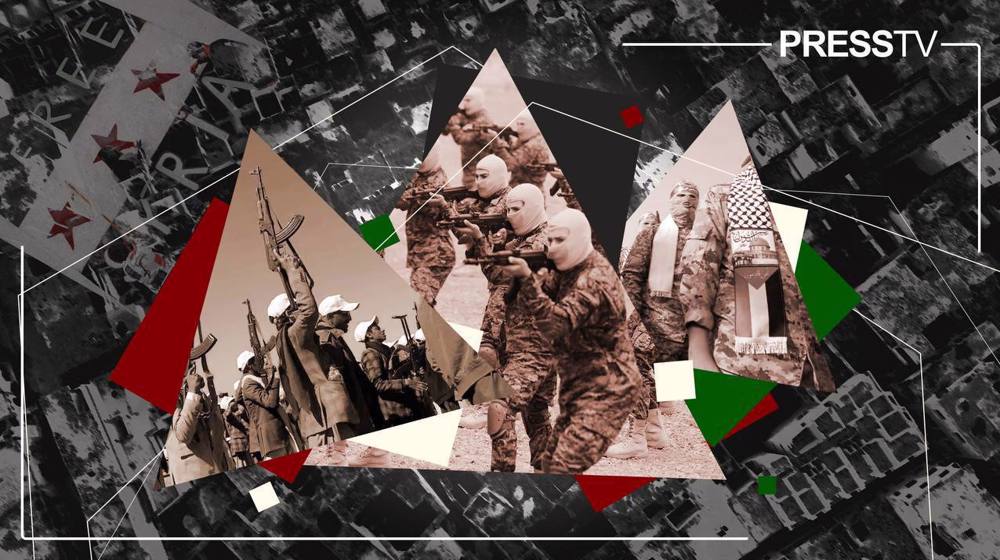Afghanistan: The graveyard of British, Soviet and American empires
By Syed Zafar Mehdi
Afghanistan has been a haunted battlefield for the world’s fiercest armies, from Alexander the Great in the third century BC to Americans in the 21st century. It has also been the graveyard of many.
Americans are the latest to pack up and slip out of Afghanistan, without ceremonial grandeur or celebratory euphoria, in a humiliating and unceremonious retreat marred by violence and chaos.
The green-tinted night vision image of Chris Donahue, the last US soldier to leave Afghanistan, looking visibly jaded, aptly symbolized American failure and capitulation after the 20-year adventure.
Military strategists would now for weeks and months unpack the Afghanistan debacle – how the world’s best-equipped army was routed by a ragtag group of Kalashnikov-yielding fighters.
The answer lies in history. “Afghanistan,” we are often told, and quite rightly so, “is the graveyard of empires.” It has again lived up to its name, pounding the world's leading superpower.
Afghanistan has been a haunted battlefield for the world’s best and fiercest armies, from Alexander the Great in the third century BC to Americans in the 21st century. It has also been the graveyard of many.
Many foreign powers over the centuries sought to conquer this mineral-rich country lying at the crossroads of Central Asia and South Asia but the harsh mountainous terrain, ruthless tribal fighters and the inclement weather inflicted crushing defeats on them.
While the chronicles of foreign invasions in the region date back to Darius the Great in 522 BC and Alexander the Great in 330 BC, who faced fierce resistance from Afghan tribes, the failed invasions of modern Afghanistan, which took shape in the 18th century under the leadership of Ahmad Shah Durrani, earned the landlocked country the epithet of the ‘graveyard of empires.’
Durrani, the founder of the Durrani Empire who defeated Persian ruler Nader Shah, is known as the founder of modern Afghanistan. Durrani dynasty was replaced by the Barakzai dynasty as the rulers of modern-day Afghanistan in 1823, when Dost Mohammad Khan rose to power.
It was during the reign of Khan, in 1839, that the British first invaded Afghanistan, as they feared growing Russian influence in the Central Asian region. The empire that controlled the Indian subcontinent wanted to extend its influence to the Hindu Kush region. But the gamble did not pay off.
The invasion led to the first Anglo-Afghan War as insurrections broke out across the country, forcing the British to retreat in 1842. However, not before some 4,500 troops along with approximately 12,000 civilians travelling with them were massacred in an ambush near the village of Gandamak. It was a major setback to the invaders and created a backlash in London.
The second British invasion came more than three decades later, in 1878, which was also part of the ‘Great Game’ between the British and Russian empires. It ended in 1880 with the Afghan tribes keeping internal autonomy and the British withdrawing from the region following the Treaty of Gandamak. Once again, the numerically inferior Afghans prevailed over the mighty British empire.
The third and decisive confrontation came in 1919, also known as the war of independence in Afghanistan. This time around, Amanullah Khan, the future king who introduced sweeping reforms, invaded British India and proclaimed Afghanistan’s independence. It further reaffirmed the country’s reputation as a nemesis of big powers.
The Great Game, which began in 1830, lasted throughout the 19th century. British basically wanted to use Afghanistan as a buffer state to protect British India from potential invasion by Russians.
In the end, they realized that militarily invading the country, home to battle-hardened tribes, is a recipe for disaster. Adopting a soft-handed approach and backing local tribal rulers, as Mughals did in the early 18th century, is a more prudent policy than propping up foreign-backed rulers.
After the expulsion of the British, the Soviet Union came calling in 1979, to shatter the Hindu Kush region’s uneasy calm. The idea essentially was to shore up the pro-Soviet regime in Kabul but the invasion led to the emergence of guerilla Afghan fighters, who came to be known as ‘mujahideen’.
Nearly 100,000 Soviet soldiers were deployed across major cities and highways in Afghanistan. The invading forces ruthlessly crushed the rebellion mounted by mujahideen and their supporters. In the brutal war that lasted around nine years, an estimated one million civilians were killed, besides 90,000 mujahideen fighters, 18,000 Afghan troops, and more than 14,000 Soviet soldiers. The invaders were finally pushed out of the country, marking the end of another inglorious chapter.
The Soviet empire collapsed two years after, so did the Soviet-backed government in Kabul. Mikhail Gorbachev, the Soviet Union leader who oversaw the pull-out of Soviet forces from Afghanistan in 1989, years later termed it a “political mistake”.
A novel ‘Two Steps from Heaven’ by Russian writer Mikhail Evstafiev, who took part in the war, describes challenges faced by the invading army in these words: “The distance between the Afghans and the Soviets was measured in centuries. A man felt safe and secure only inside the garrison, surrounded by barbed wire, tanks and machine guns; fate had strewn Soviet military divisions all over Afghanistan, they were like islands in an ocean, lonely, far from the mainland.”
The disastrous Soviet experiment in Afghanistan in the 20th century was based on unlearnt lessons from the British adventures in the 19th century and offered lessons for Americans in the 21st century.
The withdrawal of Soviet forces from Kabul in 1989 and its aftermath, both in Afghanistan and the former Soviet Union, carried important lessons on war strategy for the US and its allies. But the successive regimes in Washington, driven by hegemonic ambitions, disregarded them.
In the civil war that broke out after the withdrawal of the Soviets, Taliban militant group emerged in the southern province of Kandahar under the leadership of Mullah Omar. The group went on to capture Kabul in 1996, exploiting the power vacuum created by bloody ethnic strife.
In 2001, a few weeks after the cataclysmic 9/11 attacks, the US administration launched the so-called ‘global war on terror’, with Afghanistan as the battleground. The US-led allies started the bombing campaign on October 7, aiming to decimate the hideouts of Taliban and al-Qaeda.
Interestingly, the Taliban had offered to hand over Osama bin Laden, the alleged mastermind of the 9/11 attacks, to a third country to be tried. But the George Bush administration rejected the offer and launched deadly air raids. It was the same Bin Laden, a Saudi-born former CIA ally, who was hired as a mercenary fighter against the Soviet forces in Afghanistan during the 1980s Cold War.
The goal was to consolidate America’s military control over the landlocked country and make it subservient to the West. But the one thing successive regimes in Washington seemed to disregard was history. From the British in 1919 to the Americans in 2021, foreign powers always faced defeat and disgrace in the strategically located South Asian country.
After 20 long years of military occupation, US President Joe Biden finally pulled the plug, admitting that the war is “unwinnable” and there is “no military solution” to the protracted crisis. But strangely, it took 20 years, 2.26 trillion dollars and tens of thousands of civilian and military lives for them to understand that war cannot bring peace and foreign occupation cannot win hearts and minds.
What the US faced in Afghanistan will undoubtedly count as the worst strategic and military debacle of the last century. It also bears testimony to America’s inglorious legacy of humiliation, surrender, and defeat in the war-ravaged country.
History bears witness that all foreign powers that tried to conquer Afghanistan eventually were left with no choice but to move on. The stories of three empires, their hegemonic ambitions, and their staggering fall bear a striking similarity, from the British to the Soviets and finally the Americans.
All empires perish and the end is usually ignominious. Two of them were buried in the rugged mountains of Afghanistan. The third one will be lowered into its grave sooner than expected.
Syed Zafar Mehdi is a Tehran-based journalist, editor and blogger with over 12 years of experience. He has reported extensively from Kashmir, India, Pakistan, Afghanistan and Iran for leading publications worldwide.
(The views expressed in this article do not necessarily reflect those of Press TV.)
‘All wars have rules. All of those rules have been broken’ by Israel
VIDEO | Report flags India’s violation of rights of Rohingya detainees
Turkey's foreign minister meets Syria's de facto leader in Damascus
'Next to impossible' to rescue patients from Gaza's Kamal Adwan Hospital: Director
VIDEO | Vietnam current prosperity
Report blames gasoil exports for shortage at Iranian power plants
VIDEO | Hind Rajab Foundation names Israeli war criminals vacationing after Gaza genocide
VIDEO | Australians rally for Gaza ahead of Christmas festivities










 This makes it easy to access the Press TV website
This makes it easy to access the Press TV website